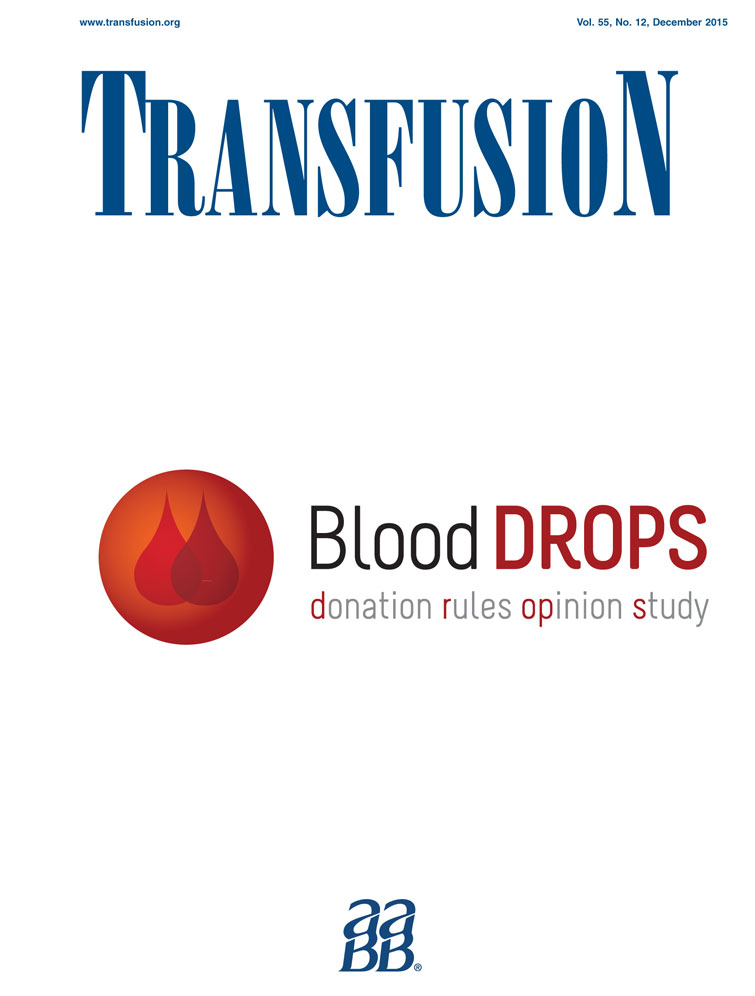Implementation of a patient blood management monitoring and feedback program significantly reduces transfusions and costs
Abstract
BACKGROUND
Patient blood management (PBM) measures have been shown to be effective in reducing transfusions while maintaining patient outcome. The issuance of transfusion guidelines is seen as being key to the success of PBM programs. As the introduction of guidelines alone did not visibly reduce transfusions in our center, a monitoring and feedback program was established. The aim of our study was to show the effectiveness of such measures in reducing transfusions and cost.
STUDY DESIGN AND METHODS
We designed a prospective, interventional cohort study with a 3-year time frame (January 1, 2012 to December 31, 2014). In total, 101,794 patients aged 18 years or older were included. The PBM monitoring and feedback program was introduced on January 1, 2014, with the subsequent issuance of quarterly reporting.
RESULTS
Within the first year of introduction, transfusion of all allogeneic blood products per 1000 patients was reduced by 27% (red blood cell units, −24%; platelet units, −25%; and fresh-frozen plasma units, −37%; all p < 0.001) leading to direct allogeneic blood product related savings of more than 2 million USD. The number of blood products transfused per case was significantly reduced from 9 ± 19 to 7 ± 14 (p < 0.001). With an odds ratio of 0.86 (95% confidence interval, 0.82-0.91), the introduction of our PBM monitoring and feedback program was a significant independent factor in the reduction of transfusion probability (p < 0.001).
CONCLUSION
Our PBM monitoring and feedback program was highly efficacious in reducing the transfusion of allogeneic blood products and transfusion-related costs.




